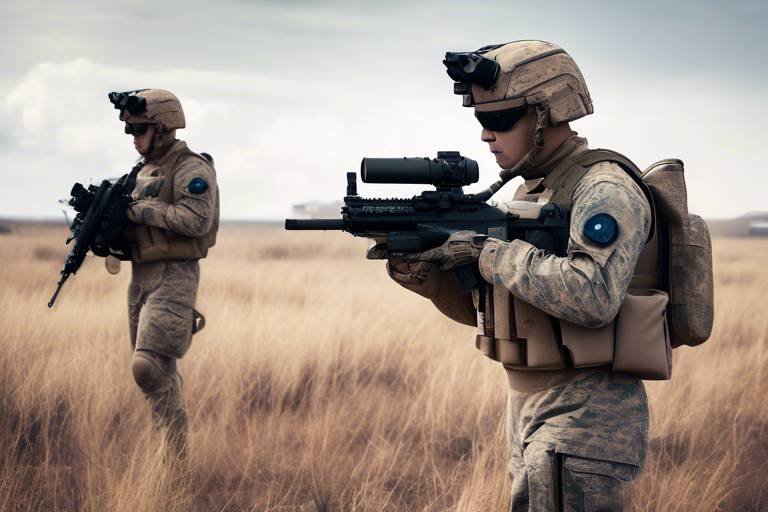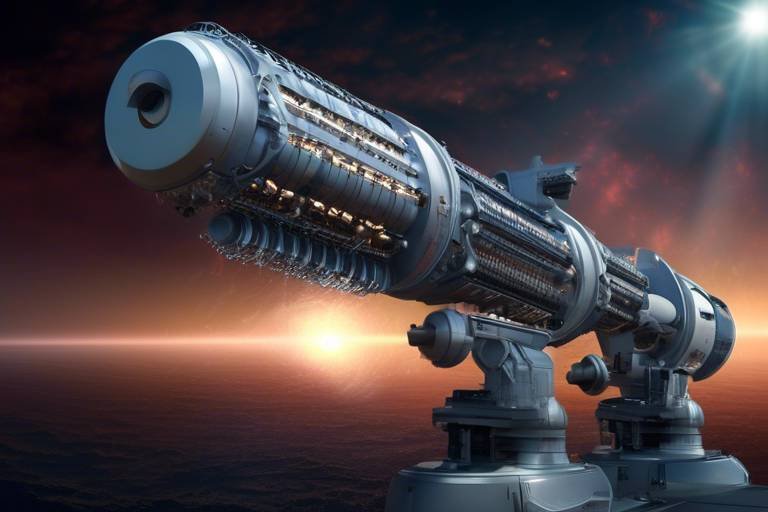The Role of Smart Helmets in Modern Warfare
In the ever-evolving landscape of military operations, smart helmets are taking center stage as a game-changing technology. Imagine a soldier equipped not just with protective gear, but with a miniature command center right on their head. These helmets are not merely a trend; they represent a significant leap forward in enhancing soldier safety, communication, and situational awareness. As we delve deeper, we'll uncover how these innovative devices are transforming the battlefield into a more connected and responsive environment.
One of the standout features of smart helmets is their ability to provide real-time data and analytics. Think of it like having a personal assistant who’s always on alert, ready to provide crucial information at a moment's notice. Soldiers can assess their surroundings with unparalleled efficiency, making informed decisions that can mean the difference between success and failure on the battlefield. With a smart helmet, critical data such as enemy positions, terrain details, and mission objectives are displayed right before a soldier's eyes, allowing for a seamless flow of information that enhances operational efficiency.
Effective communication is the backbone of any military operation, and smart helmets are revolutionizing how troops interact. Equipped with integrated communication systems, these helmets enable soldiers to communicate effortlessly, even in the heat of battle. Imagine trying to relay a vital message while dodging enemy fire—this is where smart helmets shine. They facilitate seamless interaction among troops, significantly reducing response times during critical missions. In chaotic environments, every second counts, and smart helmets ensure that soldiers stay connected.
One of the most impressive aspects of smart helmets is their voice recognition technology. This feature allows soldiers to communicate hands-free, enabling them to maintain their focus on the task at hand while relaying important information to their team. Picture a soldier in the midst of a firefight, shouting commands while navigating through obstacles; the helmet picks up their voice, ensuring that their message is transmitted clearly and instantly.
In the chaos of combat, noise can be a soldier's worst enemy. Advanced noise cancellation technology in smart helmets minimizes distracting sounds, allowing for clearer communication. This is essential for mission success, as soldiers need to hear each other amidst the clamor of gunfire and explosions. Imagine trying to communicate in a crowded stadium; without noise cancellation, vital messages could easily be lost in the din. Smart helmets ensure that soldiers can hear and be heard, no matter the circumstances.
Another remarkable feature of smart helmets is their integrated messaging systems. These systems allow for instant text communication, ensuring that critical updates can be shared without the need for verbal communication. In situations where silence is paramount, soldiers can send and receive messages discreetly, maintaining tactical advantage. This capability not only enhances operational effectiveness but also fosters a more cohesive unit.
Imagine looking through your helmet and seeing tactical information overlaid on your field of vision. This is the power of augmented reality (AR) in smart helmets. AR applications provide visual overlays that enhance understanding of the battlefield, allowing soldiers to visualize data such as troop movements, enemy locations, and environmental hazards. This technology not only improves overall mission execution but also empowers soldiers with a deeper comprehension of their operational landscape.
Beyond communication and situational awareness, smart helmets prioritize soldier safety. They incorporate safety features such as impact sensors and environmental monitoring, offering protection and alerts in hazardous conditions. In an unpredictable battlefield, these features can be lifesaving.
Imagine a soldier sustaining a blow to the head during combat; the impact detection sensors in smart helmets can detect such incidents and trigger alerts for immediate medical assistance. This technology ensures that soldiers receive the care they need right away, potentially saving lives in critical situations.
Moreover, smart helmets can monitor environmental factors such as temperature and air quality. This capability is vital for ensuring that soldiers are aware of potential hazards in their surroundings. For example, if a soldier is exposed to toxic gases, the helmet can alert them, allowing for timely action to avoid serious health risks.
As we look to the future, the evolution of smart helmets in warfare promises even more advanced technologies. With the integration of artificial intelligence (AI) and enhanced connectivity, these helmets will continue to revolutionize military operations and soldier capabilities. Imagine a helmet that not only provides data but also predicts potential threats based on real-time analysis. The possibilities are endless, and the future of warfare is undoubtedly bright with the advent of smart helmets.
- What are smart helmets? Smart helmets are advanced protective gear equipped with technology that enhances communication, situational awareness, and safety for soldiers.
- How do smart helmets improve communication? They feature integrated communication systems and voice recognition technology, allowing for hands-free communication in chaotic environments.
- What safety features do smart helmets have? Smart helmets include impact detection sensors and environmental monitoring systems to alert soldiers of potential hazards.
- What is the future of smart helmets in warfare? Future developments may include AI integration and enhanced connectivity, further improving military operations and soldier capabilities.
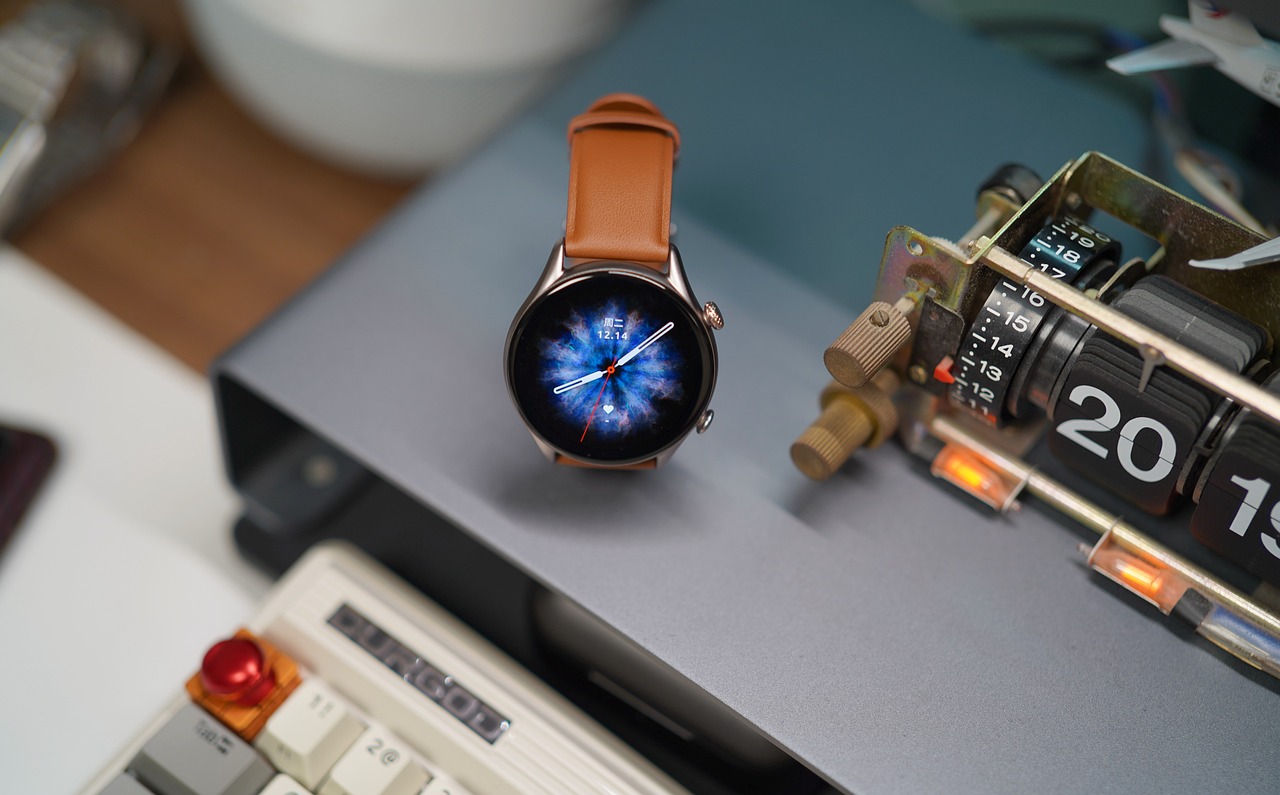
Enhanced Situational Awareness
This article explores the transformative impact of smart helmets on military operations, enhancing soldier safety, communication, and situational awareness through advanced technology and design innovations.
In the chaotic realm of modern warfare, having a clear picture of the battlefield can mean the difference between life and death. Smart helmets are revolutionizing this aspect by providing soldiers with real-time data and analytics that allow them to assess their environment effectively. Imagine being a soldier equipped with a helmet that not only protects your head but also acts as a personal command center. This capability significantly improves decision-making and operational efficiency on the battlefield, allowing troops to respond swiftly to threats and opportunities.
One of the standout features of smart helmets is their ability to overlay crucial information directly into the soldier's field of vision. Through augmented reality (AR), soldiers can see tactical maps, enemy positions, and even friendly troop locations without taking their eyes off the action. This integration of technology means that soldiers can make informed decisions almost instinctively. For instance, if a soldier needs to navigate through hostile territory, the helmet can provide a visual route, highlighting safe passages while avoiding known threats.
Moreover, the data these helmets provide is not just about what’s happening right now; it also includes predictive analytics. By analyzing patterns and behaviors, smart helmets can anticipate enemy movements, giving soldiers a tactical edge. This is akin to having a chessboard in front of you where you can see several moves ahead, allowing for proactive strategies rather than reactive ones.
Furthermore, the integration of sensors within smart helmets enhances situational awareness by monitoring environmental conditions. For example, if a soldier is operating in an area with high levels of toxic gas, the helmet can alert them, ensuring they take necessary precautions. This feature is critical, as it allows soldiers to focus on their mission without being distracted by potential dangers lurking in their surroundings.
To illustrate the impact of enhanced situational awareness through smart helmets, consider the following table that summarizes key features:
| Feature | Description |
|---|---|
| Real-Time Data | Provides immediate information about the battlefield conditions. |
| Augmented Reality | Displays tactical information directly in the soldier's field of vision. |
| Predictive Analytics | Anticipates enemy movements based on data patterns. |
| Environmental Monitoring | Alerts soldiers to hazardous conditions like toxic gases. |
In summary, smart helmets are more than just protective gear; they are essential tools that enhance situational awareness on the battlefield. By providing real-time data, integrating augmented reality, and monitoring environmental conditions, these helmets empower soldiers to operate more effectively and safely. As technology continues to evolve, we can only expect these innovations to become even more sophisticated, further transforming how military operations are conducted.
- What are smart helmets? Smart helmets are advanced headgear equipped with technology that enhances situational awareness, communication, and safety for soldiers in the field.
- How do smart helmets improve situational awareness? They provide real-time data, augmented reality overlays, and environmental monitoring, allowing soldiers to make informed decisions quickly.
- Can smart helmets communicate with other devices? Yes, many smart helmets are integrated with communication systems that allow seamless interaction among troops.
- What is augmented reality in smart helmets? Augmented reality in smart helmets overlays tactical information directly into the soldier's field of vision, enhancing their understanding of the battlefield.
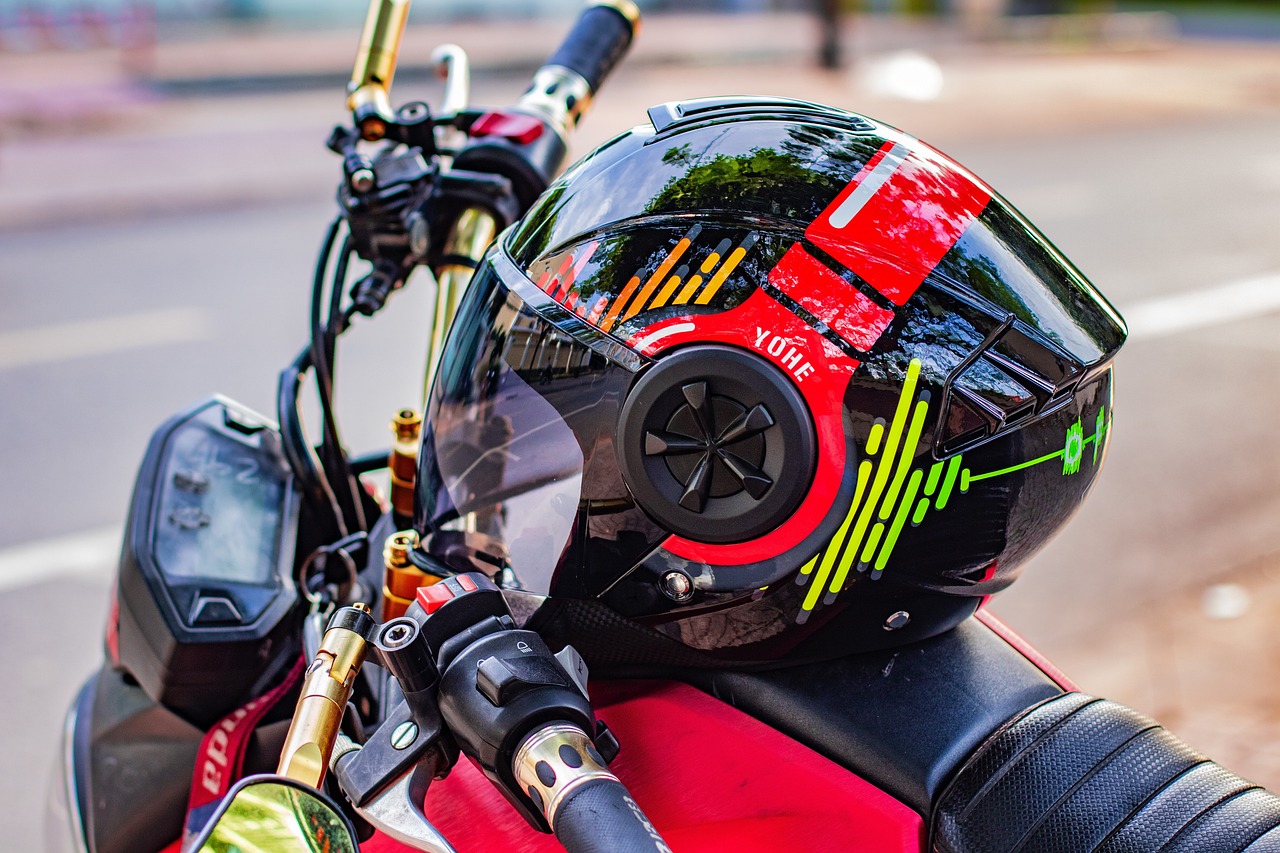
Communication Advancements
This article explores the transformative impact of smart helmets on military operations, enhancing soldier safety, communication, and situational awareness through advanced technology and design innovations.
Smart helmets provide real-time data and analytics, allowing soldiers to assess their environment effectively. This capability significantly improves decision-making and operational efficiency on the battlefield.
In the chaos of modern warfare, clear communication can be the difference between success and failure. Smart helmets are revolutionizing how soldiers interact with one another, ensuring that vital information flows seamlessly across the battlefield. With integrated communication systems, these helmets enable troops to stay connected, even in the most challenging conditions. Imagine being in a high-stakes situation where every second counts; the ability to communicate instantly can enhance coordination and reduce response times during critical missions.
One of the standout features of smart helmets is their voice recognition technology. This hands-free capability allows soldiers to relay crucial information without taking their hands off their weapons or diverting their attention from the task at hand. Picture a soldier in the heat of battle, needing to inform their team about enemy positions or request backup. With just a simple voice command, they can convey this information, ensuring that they maintain situational awareness while staying engaged in the fight.
Moreover, advanced noise cancellation technology in smart helmets plays a critical role in enhancing communication. In the midst of explosions, gunfire, and the general chaos of combat, distracting sounds can hinder effective communication. Smart helmets filter out background noise, allowing soldiers to hear their teammates clearly. This feature is essential for mission success, as it ensures that commands and updates are delivered without confusion. It’s like having a personal sound barrier that allows you to focus on what truly matters amidst the storm of battle.
In addition to voice communication, smart helmets often include integrated messaging systems. These systems enable instant text communication, ensuring that critical updates can be shared without the need for verbal exchanges. Imagine a scenario where a soldier needs to send a quick update about enemy movements or request supplies. With a simple tap on their helmet interface, they can send a message, keeping everyone in the loop and enhancing overall operational efficiency.
But the communication advancements don’t stop there. Smart helmets are also equipped with augmented reality (AR) features that provide visual overlays of tactical information. This means that while soldiers are communicating, they can also access vital data right in their line of sight. For instance, AR can display maps, troop locations, or even enemy positions, allowing for a more comprehensive understanding of the battlefield. It’s like having a personal assistant that not only helps you talk but also shows you what you need to see, making every decision more informed and strategic.
Smart helmets incorporate safety features such as impact sensors and environmental monitoring, offering soldiers protection and alerts in hazardous conditions.
These sensors can detect when a soldier has sustained a blow to the head, triggering alerts for immediate medical assistance if necessary.
Smart helmets can monitor environmental factors, such as temperature and air quality, ensuring soldiers are aware of potential hazards in their surroundings.
The future of smart helmets in warfare promises even more advanced technologies, including AI integration and enhanced connectivity, further revolutionizing military operations and soldier capabilities.
- What are smart helmets? Smart helmets are advanced headgear used in military operations that integrate communication systems, augmented reality, and safety features to enhance soldier performance.
- How do smart helmets improve communication? They facilitate seamless interaction among troops through voice recognition, noise cancellation, and integrated messaging systems, ensuring clear communication even in chaotic environments.
- What safety features do smart helmets have? Smart helmets include impact detection sensors and environmental monitoring to alert soldiers of potential hazards and provide immediate medical assistance if needed.
- What is the future of smart helmets? Future developments may include AI integration and enhanced connectivity, further improving their functionality and effectiveness in military operations.

Voice Recognition Technology
In the fast-paced and often chaotic environment of modern warfare, communication is paramount. Soldiers need to relay information quickly and accurately while remaining aware of their surroundings. This is where in smart helmets comes into play. Imagine being in the heat of battle, your hands occupied with your weapon, yet having the ability to communicate vital information seamlessly. This technology allows soldiers to issue commands and receive updates without the need to fumble with devices or take their eyes off the situation at hand.
Voice recognition in smart helmets operates through advanced algorithms that can interpret spoken commands in real-time. This means that as a soldier shouts instructions or queries, the helmet processes these inputs and executes the necessary actions. The integration of this technology is not just a convenience; it’s a game-changer that enhances operational efficiency. For instance, a soldier can simply say, “Update status,” and receive immediate feedback on troop movements or enemy positions without needing to pull out a communication device.
Moreover, the effectiveness of voice recognition technology is amplified in high-stress situations where manual communication methods may falter. The ability to communicate hands-free is crucial for maintaining situational awareness. Soldiers can keep their focus on the battlefield while still exchanging critical information with their team members. This feature is particularly beneficial during ambushes or rapid maneuvers, where every second counts.
However, the technology is not without its challenges. Background noise, such as gunfire or explosions, can hinder voice recognition accuracy. To combat this, smart helmets are often equipped with sophisticated noise-cancellation systems that filter out disruptive sounds, ensuring that voice commands are recognized correctly. This dual-layered approach—combining voice recognition with noise cancellation—creates a robust communication system that is essential for mission success.
In addition, the adaptability of voice recognition technology means that it can be customized for different military branches or specific missions. For example, a soldier in a special operations unit might use unique code words or phrases that the system can learn and recognize, further enhancing its effectiveness. This level of personalization not only improves communication but also fosters a sense of unity among troops, as they can rely on a system tailored to their specific needs.
As we look to the future, the potential applications of voice recognition technology are boundless. Imagine a battlefield where soldiers can not only communicate but also receive real-time data analytics through voice commands. They could ask for tactical updates or request support simply by speaking, creating a more fluid and responsive operational environment. The integration of artificial intelligence could further enhance this capability, allowing the system to learn from past interactions and improve its accuracy over time.
In summary, voice recognition technology in smart helmets represents a significant leap forward in military communication. By enabling hands-free, efficient, and accurate communication, it enhances soldiers' situational awareness and operational effectiveness. As technology continues to evolve, we can expect even more innovative features that will revolutionize how soldiers interact on the battlefield.
- What is voice recognition technology in smart helmets?
It is a feature that allows soldiers to communicate hands-free by issuing voice commands, enhancing situational awareness and operational efficiency.
- How does noise cancellation improve voice recognition?
Noise cancellation filters out disruptive background sounds, ensuring that voice commands are accurately recognized even in chaotic environments.
- Can voice recognition be customized for specific missions?
Yes, the technology can be tailored to recognize specific code words or phrases used by different military units, improving communication.
- What are the future prospects for voice recognition technology in warfare?
The future may include AI integration, allowing for even more sophisticated and responsive communication systems on the battlefield.

Noise Cancellation Features
In the chaos of modern warfare, the ability to hear clearly can mean the difference between life and death. Smart helmets are equipped with advanced noise cancellation technology designed to filter out distracting sounds while amplifying critical communications. Imagine being on a battlefield where explosions and gunfire drown out your team's voices; it's a recipe for disaster. This is where the magic of noise cancellation comes into play. By utilizing sophisticated algorithms, these helmets can effectively isolate important audio signals from the cacophony of the battlefield, allowing soldiers to focus on what truly matters.
One of the standout features of this technology is its ability to adapt to varying noise levels. For instance, when a soldier is in a quieter environment, the helmet can minimize background noise, making it easier to communicate with team members or listen to commands. Conversely, in a high-decibel situation, the helmet automatically adjusts to ensure that essential communications are heard without straining the user's hearing. This adaptability not only enhances communication clarity but also significantly reduces the risk of auditory fatigue over prolonged periods of exposure to loud environments.
Moreover, the importance of noise cancellation extends beyond just communication; it plays a critical role in situational awareness. By filtering out unnecessary sounds, soldiers can better detect subtle cues in their surroundings, such as the rustling of leaves or distant footsteps that may indicate enemy movement. This heightened awareness can provide a tactical advantage, allowing troops to respond more effectively to threats. In essence, the noise cancellation features in smart helmets are not just about comfort; they are a crucial component of modern military strategy.
To illustrate the effectiveness of these features, consider the following table that highlights key benefits:
| Feature | Benefit |
|---|---|
| Adaptive Noise Filtering | Ensures clear communication in varying environments |
| Reduced Auditory Fatigue | Minimizes strain on soldiers' hearing during prolonged exposure |
| Enhanced Situational Awareness | Allows soldiers to detect subtle environmental cues |
In conclusion, the noise cancellation features of smart helmets are a game-changer in military operations. They not only enhance communication but also contribute to the overall safety and effectiveness of soldiers on the battlefield. As technology continues to evolve, we can expect even more innovative solutions that will further improve the auditory experience for our brave men and women in uniform.
- What is noise cancellation technology? Noise cancellation technology is designed to reduce unwanted ambient sounds, allowing users to focus on important audio signals.
- How does noise cancellation benefit soldiers? It enhances communication clarity, reduces auditory fatigue, and improves situational awareness on the battlefield.
- Are smart helmets expensive? While the initial investment may be high, the benefits they provide in terms of safety and efficiency can outweigh the costs.
- Can noise cancellation technology be used in civilian applications? Yes, similar technology is used in consumer products like headphones and earplugs for everyday use.

Integrated Messaging Systems
In the fast-paced world of modern warfare, communication is not just important; it can be the difference between mission success and failure. in smart helmets are revolutionizing how soldiers share information on the battlefield. Imagine being in a chaotic environment where every second counts. In such situations, the ability to send and receive messages instantly without verbal communication becomes invaluable. This technology allows soldiers to stay connected with their units, ensuring that crucial updates are shared efficiently.
These messaging systems often utilize secure, encrypted channels to prevent interception by enemy forces. This means that sensitive information, such as troop movements or tactical changes, can be communicated without the risk of falling into the wrong hands. Additionally, the integration of these systems into smart helmets means that soldiers can send updates while keeping their hands free for other tasks, maintaining their focus on the mission at hand.
Furthermore, the user interface for these messaging systems is designed to be intuitive and easy to use. Soldiers can quickly compose and send messages using voice commands or simple gestures, reducing the cognitive load during high-stress situations. This is particularly beneficial when soldiers are engaged in combat, as it allows for seamless communication without the need to fumble with devices or take their eyes off the battlefield.
To illustrate the effectiveness of integrated messaging systems, consider the following table that compares traditional communication methods with smart helmet messaging:
| Feature | Traditional Communication | Smart Helmet Messaging |
|---|---|---|
| Hands-Free Operation | No | Yes |
| Speed of Communication | Delayed (due to device usage) | Instant |
| Security | Vulnerable to interception | Encrypted |
| Ease of Use | Complex (requires device handling) | User-friendly (voice/gesture commands) |
This comparison clearly shows that integrated messaging systems in smart helmets provide significant advantages over traditional communication methods. As warfare continues to evolve, the adoption of such technologies is likely to become standard practice, enhancing not only the effectiveness of military operations but also the safety and efficiency of soldiers on the ground.
- What are smart helmets? Smart helmets are advanced headgear equipped with technology that enhances communication, situational awareness, and safety for soldiers in the field.
- How do integrated messaging systems work? These systems allow for the secure and instant exchange of messages among troops, utilizing voice commands or gestures for hands-free operation.
- What advantages do smart helmets provide in combat? Smart helmets improve communication, enhance situational awareness through augmented reality, and incorporate safety features like impact detection and environmental monitoring.
- Will smart helmets become standard in military operations? Given their numerous benefits, it's highly likely that smart helmets will become standard equipment in future military operations.

Augmented Reality Applications
This article explores the transformative impact of smart helmets on military operations, enhancing soldier safety, communication, and situational awareness through advanced technology and design innovations.
Smart helmets provide real-time data and analytics, allowing soldiers to assess their environment effectively. This capability significantly improves decision-making and operational efficiency on the battlefield.
With integrated communication systems, smart helmets facilitate seamless interaction among troops. This feature enhances coordination and reduces response times during critical missions.
Voice-activated controls in smart helmets allow soldiers to communicate hands-free, ensuring they can maintain situational awareness while relaying vital information to their team.
Advanced noise cancellation technology in smart helmets minimizes distracting sounds, enabling clearer communication in chaotic environments, which is essential for mission success.
Smart helmets often include messaging systems that allow for instant text communication, ensuring that critical updates can be shared without verbal communication.
Augmented reality (AR) features in smart helmets are revolutionizing the way soldiers perceive and interact with their environment. Imagine wearing a helmet that not only protects your head but also enhances your vision with vital information displayed right before your eyes. This technology overlays tactical data onto the real world, allowing soldiers to visualize critical information without taking their eyes off the battlefield.
For instance, AR can provide:
- Navigation Aids: Real-time maps and direction indicators help soldiers navigate unfamiliar terrain efficiently.
- Enemy Location Tracking: Visual markers can indicate the positions of friendly and enemy forces, reducing the risk of friendly fire.
- Mission Details: Key objectives and mission parameters can be displayed directly in the soldier's line of sight, ensuring everyone is on the same page.
This immersive technology not only enhances situational awareness but also significantly reduces cognitive load. Instead of sifting through a barrage of information, soldiers can focus on what truly matters, making split-second decisions that can mean the difference between life and death.
Furthermore, the integration of AR in smart helmets allows for training simulations that can be conducted in real-time, providing soldiers with hands-on experience without the risks associated with live training exercises. This not only improves preparedness but also boosts confidence in executing complex maneuvers during actual missions.
Smart helmets incorporate safety features such as impact sensors and environmental monitoring, offering soldiers protection and alerts in hazardous conditions.
These sensors can detect when a soldier has sustained a blow to the head, triggering alerts for immediate medical assistance if necessary.
Smart helmets can monitor environmental factors, such as temperature and air quality, ensuring soldiers are aware of potential hazards in their surroundings.
The future of smart helmets in warfare promises even more advanced technologies, including AI integration and enhanced connectivity, further revolutionizing military operations and soldier capabilities.
- What are smart helmets?
Smart helmets are advanced headgear equipped with technology that enhances soldiers' situational awareness, communication, and safety. - How do augmented reality applications improve military operations?
AR applications provide real-time data overlays, helping soldiers navigate, communicate, and make decisions more effectively. - What safety features do smart helmets include?
Smart helmets come with impact detection sensors and environmental monitoring systems to protect soldiers from injuries and hazardous conditions. - What does the future hold for smart helmets?
Future developments may include AI integration and improved connectivity, making them even more effective in combat scenarios.
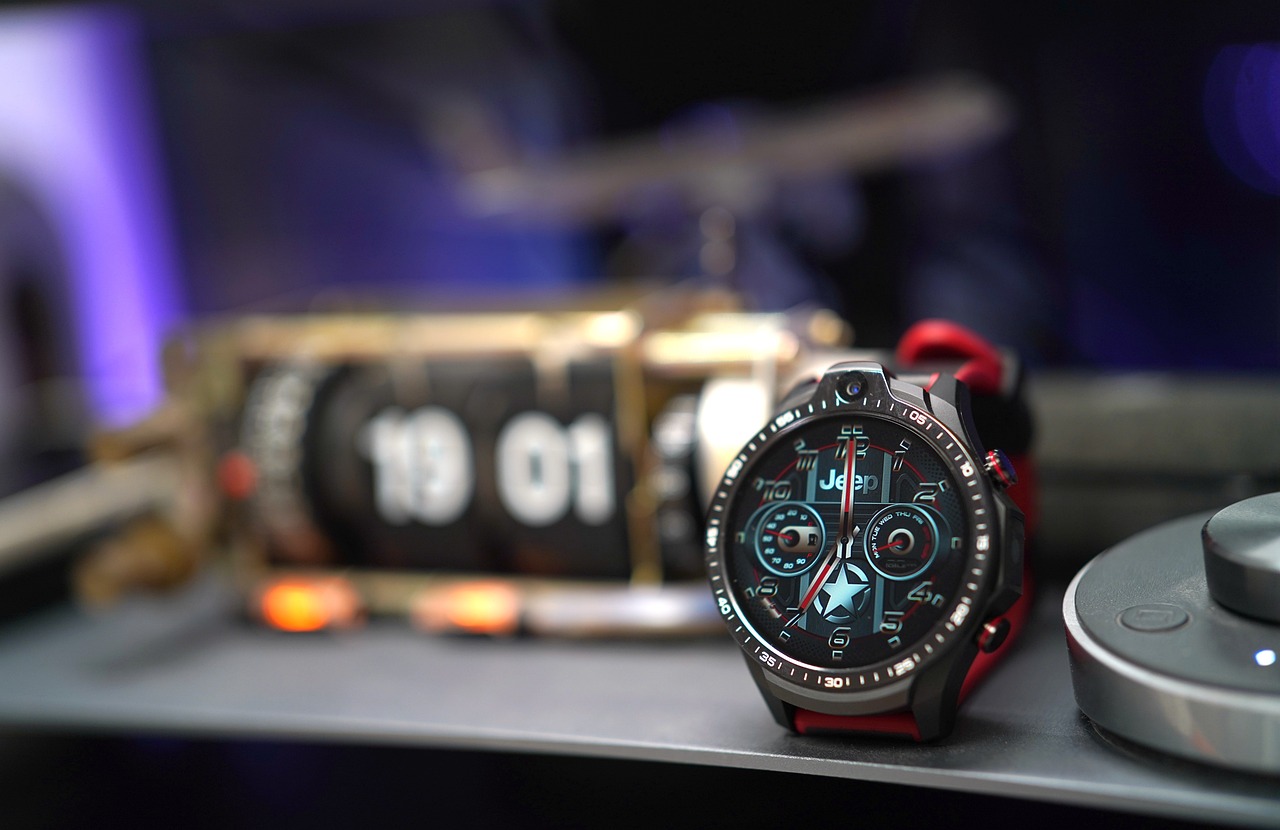
Safety Enhancements
In the high-stakes world of modern warfare, soldier safety is paramount. Smart helmets are revolutionizing how we think about protection on the battlefield. These helmets are not just protective gear; they are equipped with cutting-edge technology that enhances the safety of soldiers in ways previously unimaginable. Imagine a soldier wearing a helmet that not only shields them from physical harm but also alerts them to potential dangers in their environment. This dual functionality is what makes smart helmets a game-changer.
One of the standout features of smart helmets is their impact detection sensors. These sensors are designed to detect any significant blows to the head, which can be a common occurrence in combat situations. When a soldier experiences a hit, the helmet immediately triggers an alert, notifying medical personnel for swift assistance. This feature can be the difference between life and death, as timely medical intervention is crucial in such scenarios.
Moreover, smart helmets are equipped with environmental monitoring systems. These systems continuously assess factors like temperature, humidity, and air quality. For instance, if a soldier is operating in a region with hazardous gases or extreme temperatures, the helmet will provide real-time alerts. This proactive approach enables soldiers to take necessary precautions before they are adversely affected. Think of it as having a personal safety assistant, always on the lookout for potential threats.
| Feature | Description |
|---|---|
| Impact Detection Sensors | Detects head impacts and alerts medical teams for immediate assistance. |
| Environmental Monitoring | Monitors temperature, humidity, and air quality for hazardous conditions. |
| Alert Systems | Provides real-time alerts to soldiers about potential dangers. |
Additionally, the integration of these safety features fosters a greater sense of security among troops. When soldiers know that their helmets are equipped to detect dangers and provide alerts, they can focus more on their missions rather than worrying about their safety. This peace of mind can enhance their performance and decision-making on the battlefield. In the chaos of war, having reliable technology that prioritizes safety allows soldiers to act with confidence.
In conclusion, the safety enhancements offered by smart helmets are not just features; they represent a significant leap forward in military technology. By combining impact detection, environmental monitoring, and real-time alerts, these helmets are setting new standards for soldier safety. As technology continues to evolve, we can only anticipate even more groundbreaking innovations that will further protect those who serve on the front lines.
- What are smart helmets? Smart helmets are advanced headgear equipped with technology to enhance soldier safety, communication, and situational awareness.
- How do impact detection sensors work? These sensors detect significant impacts to the head and trigger alerts for immediate medical assistance.
- Can smart helmets monitor environmental conditions? Yes, they can monitor factors such as temperature and air quality, providing alerts for hazardous conditions.
- What is the future of smart helmets? The future includes advancements like AI integration and enhanced connectivity, further improving soldier capabilities.

Impact Detection Sensors
This article explores the transformative impact of smart helmets on military operations, enhancing soldier safety, communication, and situational awareness through advanced technology and design innovations.
Smart helmets provide real-time data and analytics, allowing soldiers to assess their environment effectively. This capability significantly improves decision-making and operational efficiency on the battlefield.
With integrated communication systems, smart helmets facilitate seamless interaction among troops. This feature enhances coordination and reduces response times during critical missions.
Voice-activated controls in smart helmets allow soldiers to communicate hands-free, ensuring they can maintain situational awareness while relaying vital information to their team.
Advanced noise cancellation technology in smart helmets minimizes distracting sounds, enabling clearer communication in chaotic environments, which is essential for mission success.
Smart helmets often include messaging systems that allow for instant text communication, ensuring that critical updates can be shared without verbal communication.
Augmented reality features in smart helmets provide visual overlays of tactical information, enhancing understanding of the battlefield and improving overall mission execution.
Smart helmets incorporate safety features such as impact sensors and environmental monitoring, offering soldiers protection and alerts in hazardous conditions.
Imagine being on the battlefield, where every second counts and danger lurks at every corner. in smart helmets are like a soldier's personal guardian angel, always on alert for potential threats. These sensors can detect when a soldier has sustained a blow to the head, triggering alerts for immediate medical assistance if necessary. This technology is not just about protecting the soldier; it's about ensuring that help is on the way at the first sign of trouble.
Here's how it works: the sensors are designed to monitor the forces exerted on the helmet. When an impact occurs, the helmet assesses the severity of the blow and can automatically send a distress signal to medics or fellow soldiers. This rapid response can be the difference between life and death in critical situations. The integration of these sensors into the helmet's design is a game-changer, allowing for a proactive approach to soldier safety.
Moreover, the data collected by these sensors can be analyzed post-mission to improve training and helmet design. By understanding the types of impacts soldiers face, manufacturers can enhance helmet durability and effectiveness. In essence, these sensors not only protect soldiers in real-time but also contribute to the ongoing evolution of military technology.
Smart helmets can monitor environmental factors, such as temperature and air quality, ensuring soldiers are aware of potential hazards in their surroundings. This feature is crucial in combat zones where conditions can change rapidly. For instance, if a soldier is exposed to toxic gases or extreme temperatures, the helmet can alert them, allowing for timely action to avoid health risks.
The future of smart helmets in warfare promises even more advanced technologies, including AI integration and enhanced connectivity, further revolutionizing military operations and soldier capabilities.
- What are smart helmets? Smart helmets are advanced headgear equipped with technology that enhances communication, safety, and situational awareness for soldiers.
- How do impact detection sensors work? These sensors monitor the forces exerted on the helmet and can detect impacts, triggering alerts for medical assistance if necessary.
- Can smart helmets improve communication among troops? Yes, smart helmets are designed with integrated communication systems that facilitate seamless interaction in the field.
- What role does augmented reality play in smart helmets? Augmented reality features provide visual overlays of tactical information, enhancing soldiers' understanding of their environment.
- What future technologies can we expect in smart helmets? Future developments may include AI integration, improved connectivity, and even more advanced safety features.

Environmental Monitoring
This article explores the transformative impact of smart helmets on military operations, enhancing soldier safety, communication, and situational awareness through advanced technology and design innovations.
Smart helmets provide real-time data and analytics, allowing soldiers to assess their environment effectively. This capability significantly improves decision-making and operational efficiency on the battlefield.
With integrated communication systems, smart helmets facilitate seamless interaction among troops. This feature enhances coordination and reduces response times during critical missions.
Voice-activated controls in smart helmets allow soldiers to communicate hands-free, ensuring they can maintain situational awareness while relaying vital information to their team.
Advanced noise cancellation technology in smart helmets minimizes distracting sounds, enabling clearer communication in chaotic environments, which is essential for mission success.
Smart helmets often include messaging systems that allow for instant text communication, ensuring that critical updates can be shared without verbal communication.
Augmented reality features in smart helmets provide visual overlays of tactical information, enhancing understanding of the battlefield and improving overall mission execution.
Smart helmets incorporate safety features such as impact sensors and environmental monitoring, offering soldiers protection and alerts in hazardous conditions.
These sensors can detect when a soldier has sustained a blow to the head, triggering alerts for immediate medical assistance if necessary.
Smart helmets are equipped with sophisticated systems that play a crucial role in ensuring soldier safety. By continuously assessing environmental factors, these helmets can alert soldiers to potential hazards that may not be immediately visible. For instance, they can measure air quality, temperature, and even radiation levels, allowing troops to make informed decisions about their surroundings.
Imagine a soldier navigating through a dense forest or an urban battlefield. The ability to receive real-time updates about air quality can be a game-changer. If the helmet detects harmful gases or pollutants, it can instantly notify the soldier, prompting them to don a mask or move to a safer location.
Moreover, the integration of environmental sensors can help in identifying extreme weather conditions. For example, if the temperature drops to dangerous levels, the helmet can alert the soldier to seek shelter or take protective measures. This proactive approach to environmental awareness not only enhances individual safety but also contributes to overall mission success.
The future of smart helmets in warfare promises even more advanced technologies, including AI integration and enhanced connectivity, further revolutionizing military operations and soldier capabilities.
- What are smart helmets? Smart helmets are advanced headgear equipped with technology that enhances communication, situational awareness, and safety for soldiers in the field.
- How do smart helmets improve soldier safety? They incorporate features such as impact sensors and environmental monitoring to alert soldiers to potential hazards, ensuring their safety during operations.
- Can smart helmets be used in various environments? Yes, smart helmets are designed to function effectively in diverse environments, from urban settings to remote terrains.
- What future technologies can we expect in smart helmets? Future developments may include AI integration, improved connectivity, and enhanced augmented reality features to further assist soldiers in the field.
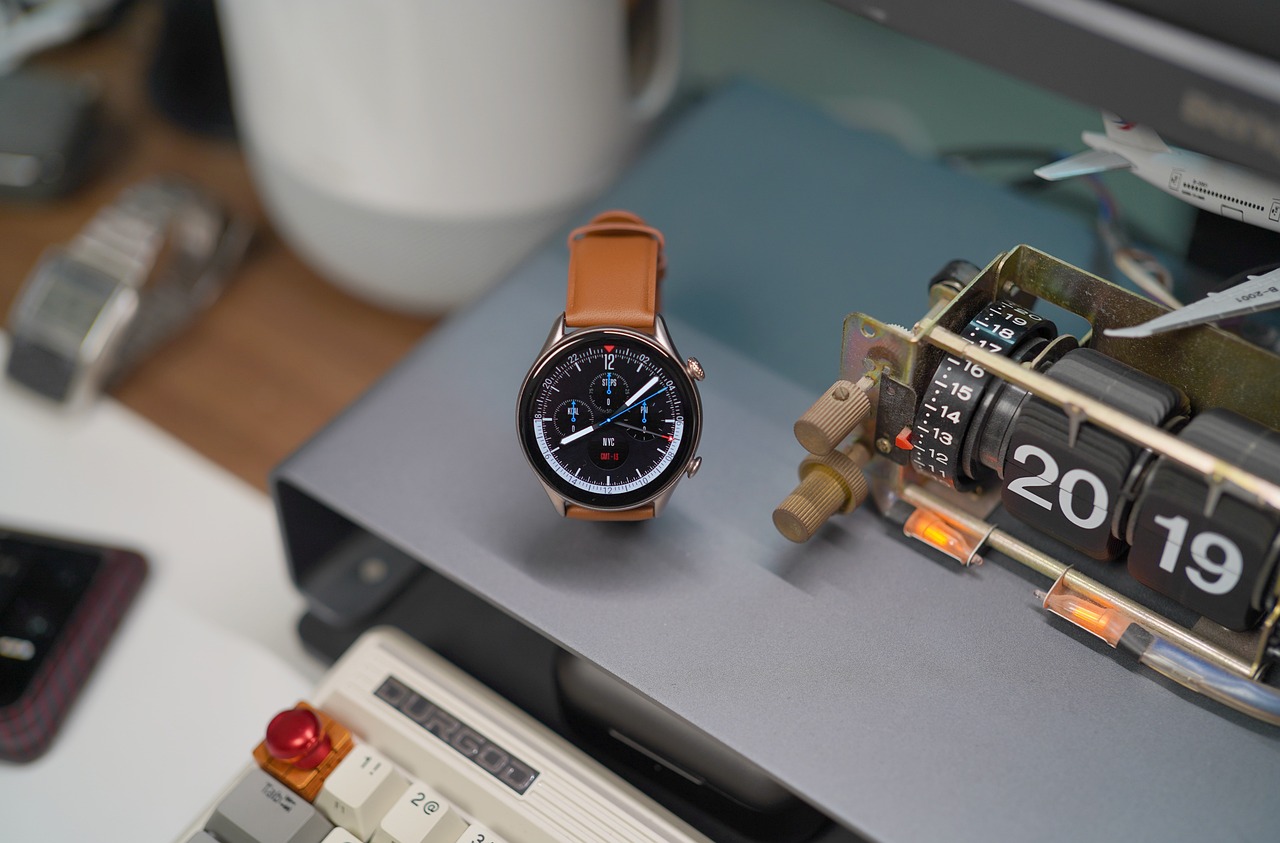
Future Developments
The future of smart helmets in warfare is not just bright; it's practically glowing with potential! As technology evolves at a breakneck pace, we can expect smart helmets to become even more sophisticated, integrating features that will revolutionize how soldiers operate on the battlefield. Imagine a world where helmets are equipped with artificial intelligence that can analyze situations in real-time and provide soldiers with actionable insights. This kind of advancement could change the game entirely, allowing for quicker decision-making and enhanced tactical advantages.
One of the most exciting prospects is the integration of enhanced connectivity. With the rise of the Internet of Things (IoT), smart helmets could communicate seamlessly with other devices on the battlefield, creating a network of information that keeps soldiers informed and connected. Picture this: a soldier’s helmet not only relays information from their immediate surroundings but also receives data from drones, ground vehicles, and even other soldiers, creating a comprehensive picture of the operational environment. This interconnectedness would significantly improve situational awareness and operational efficiency.
Moreover, we can anticipate advancements in health monitoring technologies. Future smart helmets may be equipped with sensors that continuously monitor a soldier's vital signs, such as heart rate, temperature, and stress levels. This data could be invaluable, providing commanders with insights into their troops' physical and mental states. In high-pressure situations, understanding a soldier's health could mean the difference between life and death.
Additionally, the potential for customization is immense. As we move forward, smart helmets could be tailored to meet individual soldier needs, adapting features based on specific missions or personal preferences. This level of personalization could enhance comfort and usability, making these helmets even more effective in the field.
In summary, the future of smart helmets in warfare is poised for remarkable advancements. With AI integration, enhanced connectivity, health monitoring, and customization on the horizon, these helmets will not only protect soldiers but also empower them with the information and tools they need to succeed in complex combat environments. The battlefield of tomorrow will be a place where technology and human ingenuity come together, creating a safer and more efficient operational landscape.
- What are smart helmets? Smart helmets are advanced headgear equipped with technology that enhances communication, situational awareness, and safety for soldiers on the battlefield.
- How do smart helmets improve soldier safety? They incorporate features like impact sensors and environmental monitoring to alert soldiers to potential dangers and ensure their well-being.
- What role does augmented reality play in smart helmets? Augmented reality provides visual overlays of tactical information, helping soldiers understand their environment better and make informed decisions.
- Will smart helmets become more common in the future? Yes, as technology continues to advance, smart helmets are expected to become a standard part of military gear, enhancing capabilities and safety.
Frequently Asked Questions
- What are smart helmets?
Smart helmets are advanced headgear designed for military use, equipped with technology that enhances communication, situational awareness, and safety for soldiers on the battlefield. These helmets integrate features such as augmented reality, noise cancellation, and real-time data analytics.
- How do smart helmets improve situational awareness?
Smart helmets provide soldiers with real-time data and analytics, allowing them to assess their environment effectively. This capability enhances decision-making and operational efficiency, making it easier for troops to navigate complex and dynamic battlefield scenarios.
- What communication features do smart helmets offer?
Smart helmets come with integrated communication systems that enable seamless interaction among troops. They often include voice recognition technology for hands-free communication and messaging systems for instant text updates, ensuring that soldiers can stay connected without compromising their situational awareness.
- How does noise cancellation work in smart helmets?
The advanced noise cancellation technology in smart helmets minimizes distracting sounds from the environment, allowing for clearer communication among soldiers. This feature is crucial in chaotic situations where clear dialogue can mean the difference between mission success and failure.
- What safety features are included in smart helmets?
Smart helmets are equipped with safety features such as impact detection sensors that alert medical personnel if a soldier sustains a blow to the head. They also monitor environmental factors like temperature and air quality, helping soldiers to stay informed about potential hazards in their surroundings.
- What future developments can we expect for smart helmets?
The future of smart helmets in warfare looks promising, with advancements in AI integration and enhanced connectivity on the horizon. These developments are expected to further revolutionize military operations, providing soldiers with even more sophisticated tools to enhance their effectiveness and safety in combat.


















